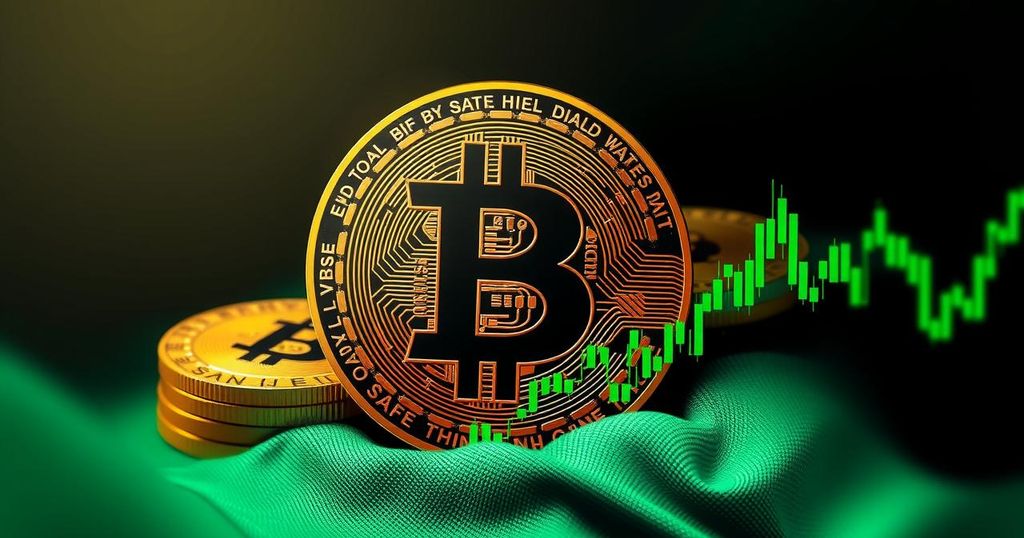Bitcoin’s Emergence as a Modern Safe Haven Amidst Trade Tensions
Bitcoin is beginning to be viewed as a potential safe-haven asset amidst rising trade tensions, traditionally reserved for gold and US Treasuries. Its behavior during market downturns, notably during the 2018-19 trade war and the 2025 tariff crisis, suggests its evolving role in financial markets. Despite its volatility, Bitcoin’s stability during turmoil invites speculation about its place alongside conventional safe havens, reflecting a shift in investment tactics and preferences.
In an evolving financial landscape, Bitcoin is emerging as a contender in the safe-haven asset debate, traditionally dominated by gold and US Treasuries. Historically, investors have gravitated towards these assets amidst crises; however, Bitcoin’s resilient performance during global disruptions, such as trade wars, invites a renewed interest in its potential role as a store of value.
Traditionally, ‘safe haven’ assets are not about generating profit but about preserving value in tumultuous times. Gold and US dollars generally exhibit low volatility and high liquidity, making them preferred choices during economic uncertainty. In contrast, Bitcoin’s notorious volatility complicates its classification as a safe haven, yet it has shown occasional stability during market turmoil, which propels its candidacy in this discussion.
Examining the 2018-19 US-China trade war reveals Bitcoin’s significant price surge during moments of market instability, with Bitcoin price doubling from $5,000 to $12,000 amidst concerns over trade. This shift in perception led to the recognition of Bitcoin as ‘digital gold’, due to its finite supply and decentralized nature, which may protect it from risks associated with fiat currencies and governmental policies.
In 2025, renewed concerns surrounding tariffs implemented by President Trump resulted in a significant market drop. Notably, Bitcoin’s stability during this financial upheaval unveiled its evolving role as a value-preserving asset, highlighting its capability to withstand economic chaos better than many traditional investments.
While maintaining a correlation with tech stocks, Bitcoin’s emergence as a serious asset for consideration indicates that it has matured beyond its speculative roots. A significant increase in institutional investment, coupled with advancements in custody solutions, enhances its role not merely as a speculative commodity but as a potential hedge against geopolitical and monetary instability.
Looking at its performance through the lens of turbulent events, Bitcoin occasionally demonstrates characteristics of a safe haven. It poses intriguing questions regarding its long-term implications on financial stability, portfolio diversification, and wealth preservation strategies. Even as Bitcoin continues to experience price volatility and retains a secondary status relative to gold, its potential as a modern protective asset is undeniable, particularly in an increasingly digitised economy.
In conclusion, Bitcoin has not yet become the definitive safe haven asset akin to gold. However, its growing appeal among investors, especially amid escalating global tensions, positions it as a noteworthy option for risk management in contemporary financial strategies. As traditional trust in financial systems wanes, Bitcoin may indeed redefine perceptions of safety for a new generation of investors.




Post Comment